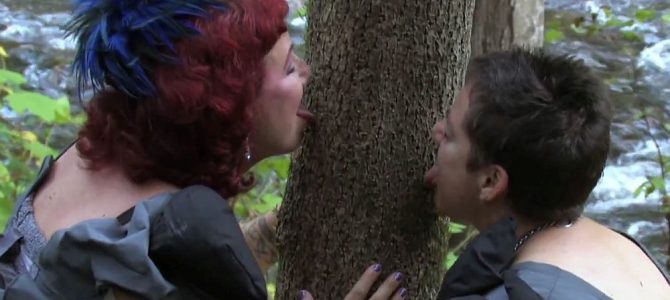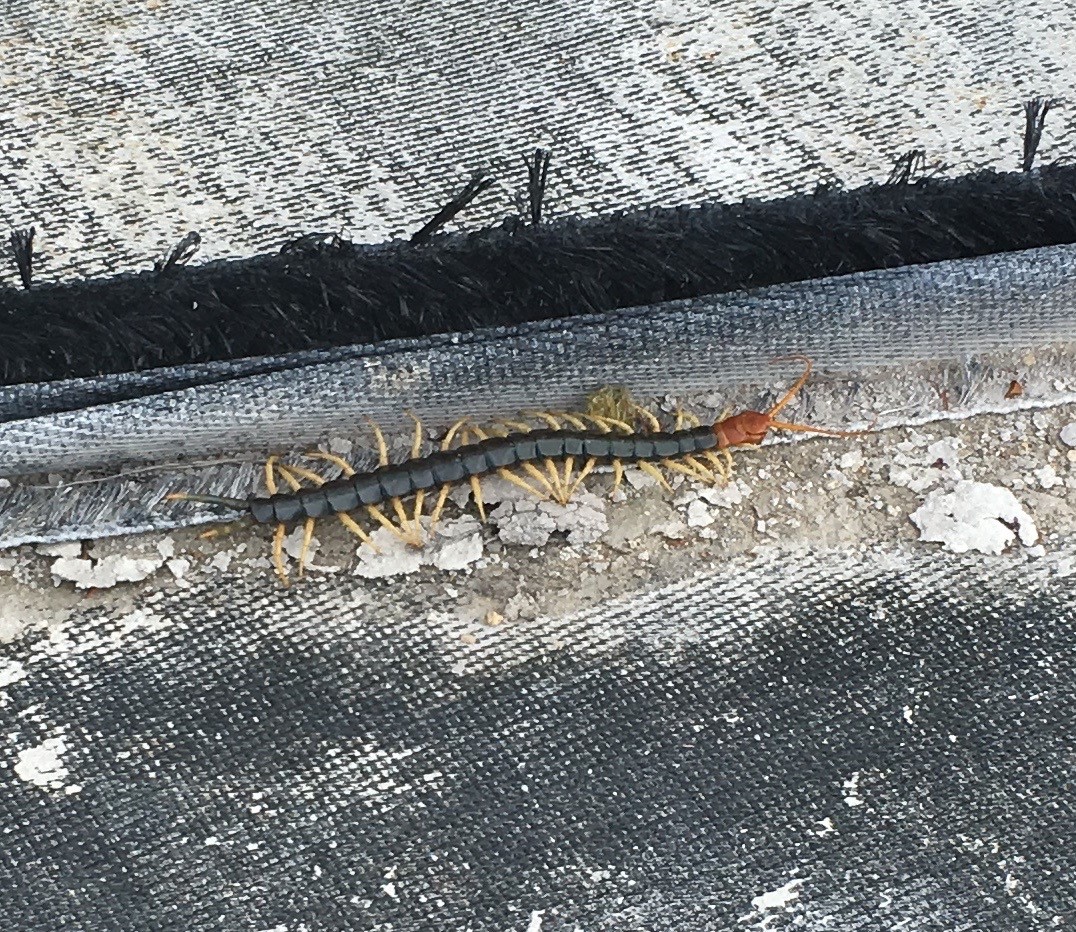
Good day, America! Meet the “ecosexuals,” a group of cheerfully deranged human beings who earnestly wish to engage in sexual relations with Planet Earth. Yes, you read that right. But first, an anecdote.
In 1913, fresh off a resounding electoral defeat, Theodore Roosevelt, everyone’s favorite intrepid mustachioed adventurer, wandered down South America way. As was his wont, Roosevelt found himself quickly roped into a wildly impractical and highly dangerous journey. His mission: to map a treacherous and uncharted Amazon tributary that easily boasted at least 1,000 ways to die, including natives with poison darts, mysterious diseases, perilous rocky rapids, and numerous fantastic beasts.
If you’ve read “River Of Doubt,” Candace Millard’s 2006 account of Roosevelt’s epic trek through the Amazon—a journey that almost finished him off—you might recall the most horrifying beast of all. It is the tiny aquatic candiru, otherwise known as the “toothpick fish.” The candiru might seem innocent, but its specialty is deadly: desperately “wiggling,” as Millard put it, “its way into a urethra.” I’ll pause so you can cringe, cry, or quickly find the nearest bomb shelter or comfort dog.
“The most widely discussed, if highly controversial, theory is that candirus are attracted to urine streams, mistaking them for the gill streams of fish,” Millard writes. “Before the unsuspecting bather knows what is happening, the candiru has followed the stream to its source, slipped inside, sunk its spine in the soft tissue, and begun to gorge on its host’s blood…The candiru soon dies where it is, the its body continues to block the urethra, causing excrutiating pain and, if not removed, death.”
Well! Take it from Ranger Wilhelm, kids: Never pee in the Amazon River.
In recent history, the lessons of the terrifying candiru have been unceremoniously brushed aside. Instead, Mother Nature is painted as a kindly, grandmotherly sort—or even better, a sympathetic warrior woman with a side job as the resident psychic at Tuscon’s Canyon Ranch. As “River of Doubt” reminds us, along with basic human life experience, Mother Nature is actually a rather creative killing machine. Tornados! Bee swarms! Tsunamis! Giant Los Angeles sinkholes! In the game of environmental Clue, the weapons list never ends.
The newish “ecosexual” movement, it seems, has disregarded this lesson. With that in mind, let’s get to know the devil-may-care leading lights dedicated to literally sexing up the earth.
Where the Ecosexuals Roam
“Beth Stephens and Annie Sprinkle are perhaps the best-known advocates of ecosexuality,” reports October’s Outside magazine, “a sliding-scale term used to describe the various interactions of the environment and human sexuality.” In their official bios, helpfully found at Sexecology.org, Stephens and Sprinkle describe themselves as “two ecosexual artists-in-love,” a dynamic duo that spends most of their earthly hours creating various collaborative “art” projects and “research” into “the places where sexology and ecology intersect in our culture.”
Stephens and Sprinkle advocate treating the earth like a lover, not a mother. They call for adding an “E” to the long-suffering, ever-lengthening acronym of LGBTQI. They make films. They conduct “ecosex performance art weddings” around the world, and fly off to places like Tulum to meditate with various shamans, including, according to their website, at least one “macho wiener dog shaman.” While in Mexico, one once mistook for ancient Mayan wisdom basic signs explaining how to use the toilet.
As a quick aside: Why don’t we all do versions of this for a living? Doesn’t it sound like a whole lot of wacky hijinks and fun? How do people like this make enough money to survive, let alone jet off to visit various shamans and sweat lodges? Here’s to you, Beth Stephens and Annie Sprinkle! I’m not going to lie: I kind of admire you. You’re living the dream.
It’s Not All Humping Trees…
Anyway, here’s modern marvel Beth Stephens, talking with Outside magazine again: “We’re not actually out there humping trees—even though sometimes we will kind of perform that—but it’s more about breaking down separations between humans and nature.”[Editor’s note: Stephens and Sprinkle’s own website features various photos of them cheerfully humping trees.]
“As I’ve gotten older and wiser,” Sprinkle adds, “I see that sex is much bigger and more spectacular than just two bodies coming together in a dark room. And sex is better outside. Ecosexuals like having sex outside. The ‘25 Ways to Make Love to the Earth’ list kind of nails the whole concept.”
Ah, yes, the “25 Ways to Make Love to the Earth” manifesto, which contains advice like “10. Touch her all over,” “15. Do a nude dance for her,” “17. Kiss and lick her,” and “18. Bury parts of your body deep inside her soil.” If you live in a glorious place like Texas, that last tip should send red flags flying all over your brain, considering that the soil could likely include a pile of fire ants, a scorpion or two, or THIS, which I found a few weeks back, and was ALMOST ONE FOOT LONG:

Here’s the thing: Deep down, I suspect many so-called ecosexuals—according to Stephens, there are approximately 100,000 around the world, and as Vice reports, the term has “spiked dramatically” on Google searches over the past year—might not spend that much time in the actual wilderness at all.
Amanda Morgan, a faculty member at the University of Nevada-Las Vegas who is “involved in the ecosexual movement,” tells Vice that ecosexuality should be measured on a scale, with people “who enjoy skinny dipping or naked hiking” on the more conservative end, and people who make love to waterfalls or potted plants on the other.
Forget getting intimate with your neighbor’s begonias. Naked hiking? Seriously? Anyone who has done serious hiking of any sort can tell you this might be just about the worst idea on the planet. It is a recipe for scars, a prescription for scrapes, and an invitation for insects—not to mention the horrifying candirus of the world—to descend upon your nether regions with impunity.
Ah, well. Details, details. Forget serious conservation measures; back to the experiential art fair we go! It’s on pavement, packed with food trucks, and probably even offers some shopping options. Be careful, though: You might run into an aggressive pigeon or two.









